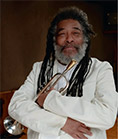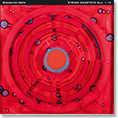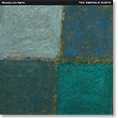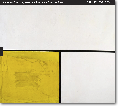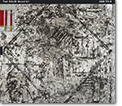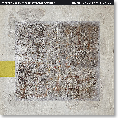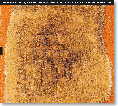STRINGS REVISITED
This recording revisits some of the music included on the "Strings" recording (Juhani Aaltonen & Otto Donner: Strings, Love Records LRCD 160) that was chosen the Finnish jazz recording of the year in 1976 and also favorably received by the international jazz press. The idea was to build on "Strings" as a starting point to create something new. Three compositions already included on the original "Strings" were recorded as new arrangements. In addition, Henrik Otto Donner composed three new works for saxophone and strings.
The combining of a jazz soloist with a string ensemble was no more a novel idea in 1976 than it is today, with Charlie Parker having already been featured with strings in 1947 both live and in a recording studio. Although certain of such projects - say, Clifford Brown in the 1953 sessions arranged by Neal Hefti or Stan Getz with the Eddie Sauter Orchestra in the 1965 - had been successful, many others relegated the strings to providing little more than syrupy accompaniment. In this, the original "Strings" session was different from any of its predecessors as it married a truly modern soloist with equally modern writing for the strings. Still today, the music sounds fresh and creative. Hence, the idea to try out the same combination again - nearly thirty years later.
The composer of the music featured on "Strings Revisited", Henrik Otto Donner, had the following to say about the project:
"I hate to do the same thing twice. Maybe that´s a jazz musician´s prerogative. After all, one does not ever play the same solo improvisation twice either. So, when the idea to redo the golden "Strings" material from 1976 came up, my immediate reaction was to think of something new. How to show that we are different persons today, that our esthetics have changed, that redoing the material would come out differently because we are different? Possibly, not better but presented in a manner more relevant for today´s world. So we tried, and different it was.
Three new pieces emerged; showcases for Juhani Aaltonen´s tenor saxophone, free but systematic. Writing for a friend whose playing you have followed for as long as I have Juhani´s is not strict composition in the traditional sense. It´s more like writing a play with parts, a dialogue where a question is not always followed by an answer but still, most certainly, by a reaction. Sometimes, even an unexpected one.
So here we are, my compatriot and I, trying to make the most beautiful music we can for you, our listener. Hear how different we are from thirty years back, and still the same!"
This time, the basic trio of Juhani Aaltonen on tenor saxophone, Reggie Workman on bass and Andrew Cyrille on drums was joined by The Avanti! Chamber Orchestra conducted by Henrik Otto Donner. So, for one week in November 2002, Aaltonen worked intensely with Workman and Cyrille to put together a set of music for the trio and, with Donner and Avanti!, to rehearse and twice perform in concert the music on this recording. At the end of the week, the whole ensemble entered the studio to record this album and its companion, a recording of the trio alone which is to be released at a later time.
Juhani Aaltonen´s career has been characterized by his close cooperation with a number of leading Finnish jazz composers, many of whom have used Aaltonen as one of their main soloists over a period of several years or even virtually all of their careers. An excellent example of this is Juhani Aaltonen´s cooperation with Henrik Otto Donner which originates from the 1960s and has continued in various forms to date having encompassed everything from a membership in Donner´s groundbreaking group The Otto Donner Treatment in the late 1960s to soloist responsibilities in large scale works such as the "Spirit of the Valley" suite performed with the UMO Jazz Orchestra in the 1990s (Henrik Otto Donner: Dalens Ande, BETA BECD 4025).
Through their long association, Aaltonen and Donner have developed an appreciation and understanding of each others´ music that is rare for any two artists. In fact, Donner has said that, if he were to play the tenor saxophone, he would wish to play it just like Aaltonen. Aaltonen is Donner´s alter ego on the tenor saxophone. For Aaltonen, on the other hand, Donner has provided an outlet for self-expression and growth beginning with their frequent collaborations in the late 1960s. A conservatory-trained composer and a largely self-taught intuitive improviser have come together to forge a unique, long-term musical alliance. For many, the most memorable fruit of this alliance is still the original "Strings" recording. Now, we have a second chapter that again combines Aaltonen´s rich tenor saxophone with the full sound of a string ensemble.
Although the music for the string ensemble was almost fully written out, this was not the case for the trio featured with the strings. Considerable room was left for Aaltonen as a soloist to put his own creative stamp on the music and for Workman and Cyrille to improvise within the compositional framework. This freedom did much to preserve the freshness and spontaneity of the music. However, just like the rhythm section on the original "Strings" session and as befits the music, Workman and Cyrille were used rather sparingly to accent and to carry forward the music, with the main focus always remaining on Aaltonen and the strings. Nonetheless, the involvement of Workman and Cyrille gave the music a whole new dimension and also spurred on their younger colleagues who could not but be impressed by the openness and curiosity with which the two veterans approached the music.
In Donner´s personality as an artist, two worlds collide in a manner that has for over forty years resulted in a creative chaos yielding most unpredictable results. In the early 1960s, Donner was considered the enfant terrible of modern classical music in Finland and raised more than a few eyebrows by first embracing jazz as a musician and composer and then rock music and the political song movement as a record producer rather than staying on the course mapped out for him by others. To this day - although now a de facto member of the arts establishment - Donner continues to devote himself to this versatility and open-mindedness. Likewise, Aaltonen has always been open to any situation that allows him to express himself as a creative musician. He has never felt the need to restrict himself to one form of music alone, which has, at various times, angered musicians both in the avant garde camp and within the field of popular music.
When this music was recorded, the musicians had already shared a week of rehearsals and two concert performances together rather than just entering the studio to face sheets of new music. This situation served the music well since it enabled the recording to take place in an open and low-pressure setting. The music was recorded 100 percent live in studio and each composition was completed in its first or second take without any overdubbing or other studio manipulation. The goal was to present the music as it was played at the moment of its creation - nothing less and nothing more. This is in keeping with Donner´s approach to music. Even as a composer, he retains an improvisatory character in his music, and, as a conductor, he has little patience for honing down the minute details, focusing instead on the overall sound and ambience. The "Strings Revisited" sessions involved very little grinding of teeth and were completed in a relaxed and collaborative atmosphere despite the full program for the week.
There is one key difference between the original "Strings" session and this recording. The 1976 recording included five songs or other compositions that Donner had originally composed for different musical situations and arranged for Aaltonen and strings for the purpose of the recording. As a result, the music still preserved the fairly conventional quality of a jazz soloist being accompanied by strings. The three new compositions break free of that convention as each work was composed specifically with Aaltonen and strings in mind. These are not arrangements of existing tunes but rather organic works for a chamber orchestra and a soloist. In particular, the lengthy "Trains & Boats & Planes" could well be described as a concerto or a suite for a chamber orchestra and a saxophone soloist.
One feels that Donner´s classical background has had a stronger influence on these compositions than was the case with the prior session. With "Strings Revisited", Donner truly combines in his compositions what he knows and likes best in each of jazz and classical music. In the process, the line between jazz and classical influences has been blurred to the extent of becoming meaningless. Call it jazz, call it classical, call it third stream but who really cares. It´s music.

